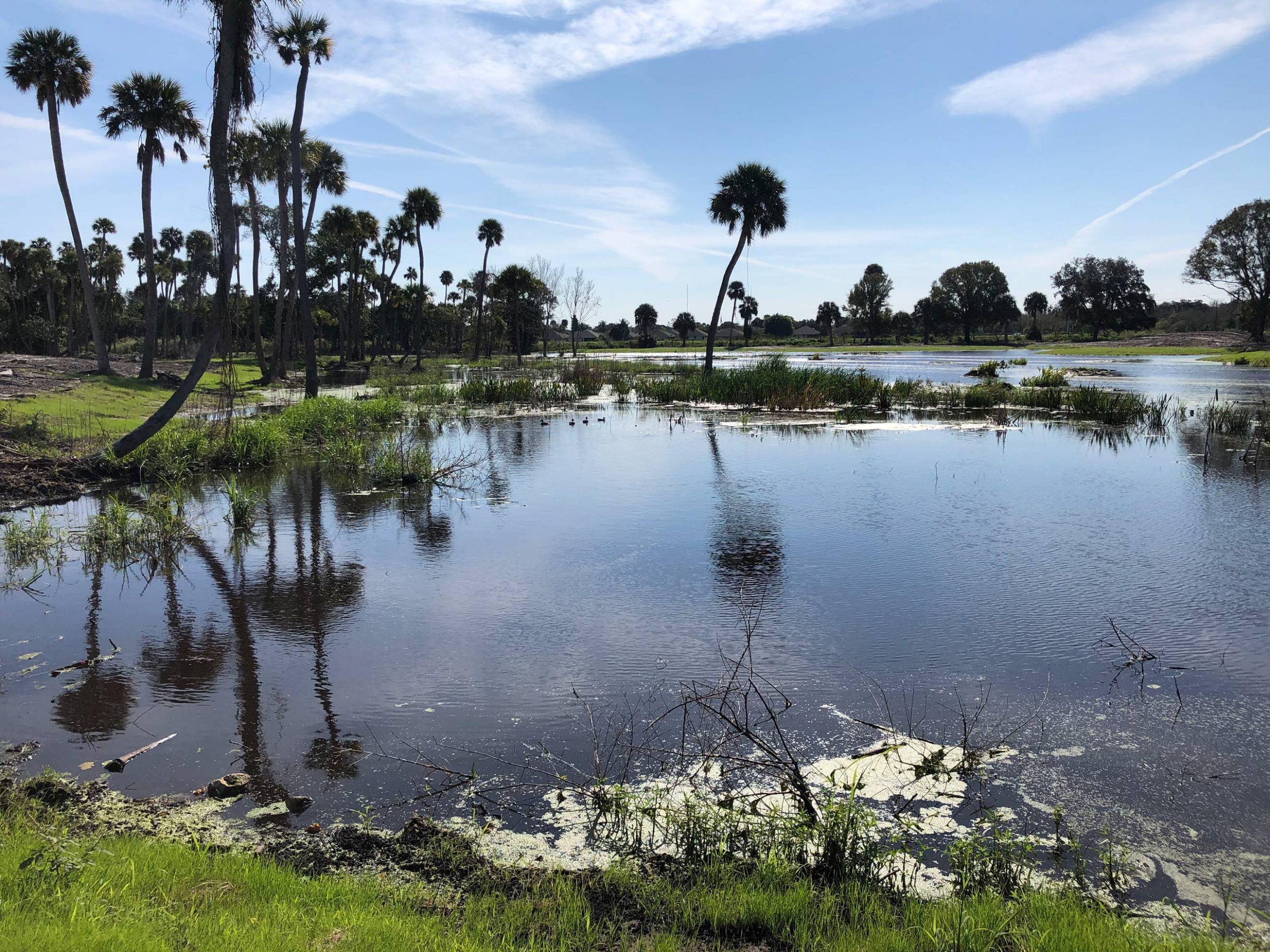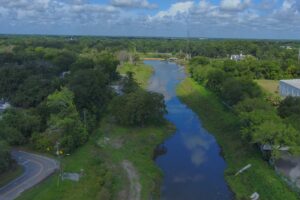Restoration of Indian River Lagoon
wetland is one more positive step for region
Sept. 10, 2020
Restoration of a 35-acre site along a stretch of the Indian River Lagoon is nearing completion as the St. Johns River Water Management District continues to make strides in helping to improve water conditions in this Estuary of National Significance.
The stretch of land, found within the Coastal Oaks Preserve in Indian River County, is part of a larger 220-acre preserve owned by the Indian River Land Trust, which contains tropical oak hammocks, wetlands and ponds and provides a critical habitat for hundreds of wildlife species. In addition to benefiting the District’s core missions of water quality and natural systems, this restoration project is a great partnership with the Florida Department of Transportation (FDOT) and Indian River Land Trust.
In 2018, the District reimbursed the Indian River Land Trust $200,000 toward the acquisition of the property, with funding from FDOT’s mitigation program, in which the agency either provides environmental enhancement or preservation to mitigate for unavoidable wetland impacts within a defined region. The Indian River Land Trust purchases undeveloped waterfront lots on the lagoon to preserve environmentally important land and water resources along the estuary. The Land Trust has plans for elevated boardwalks and a pavilion that will provide opportunities for outdoor education and scientific research for students.
The District is spending an additional $800,000 to restore or enhance historic habitat communities that would have been present on the site, including forested wetlands that have all but disappeared along the lagoon estuary. As part of the restoration this includes planting native species and taking steps to control invasive exotic plants over the next two years.
Such public-private projects are among critical partnerships to provide environmental benefits across our state. We’re grateful for groups willing to combine efforts to protect water resources for the benefit and enjoyment of us all.






